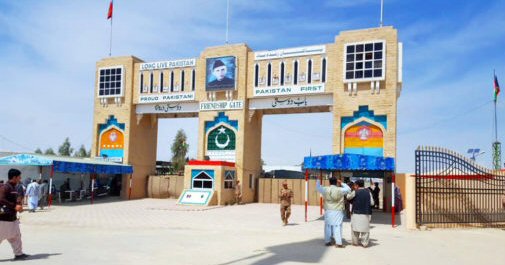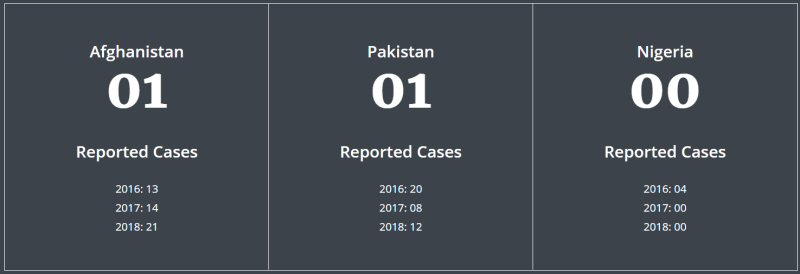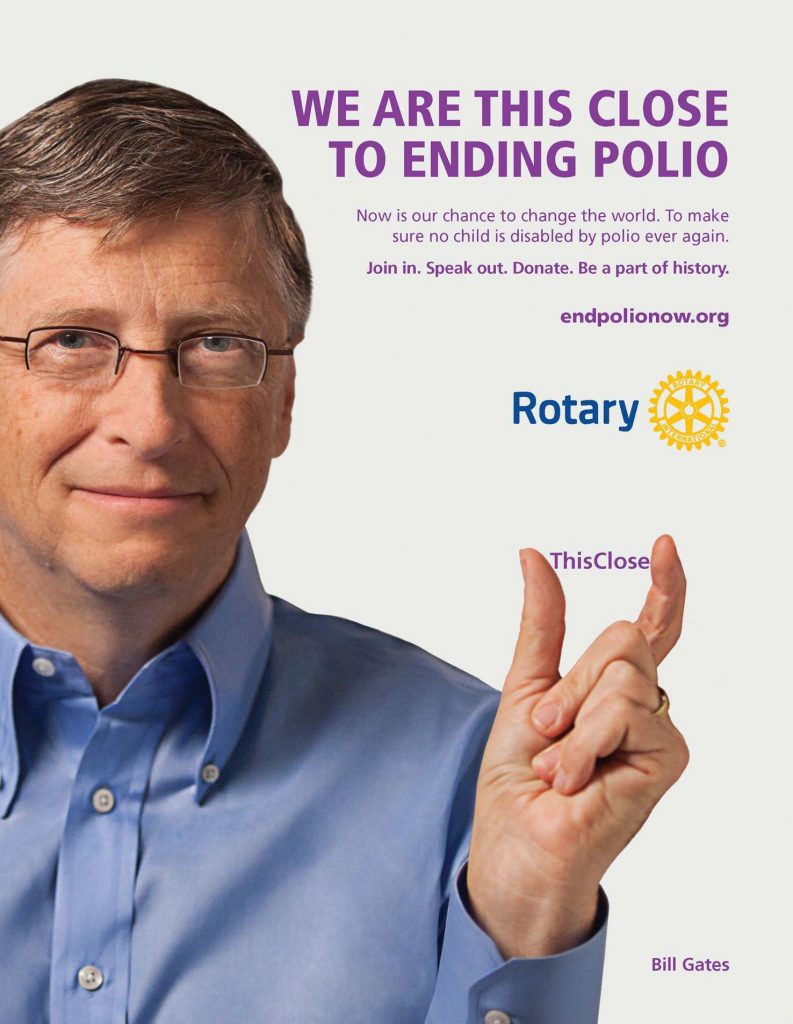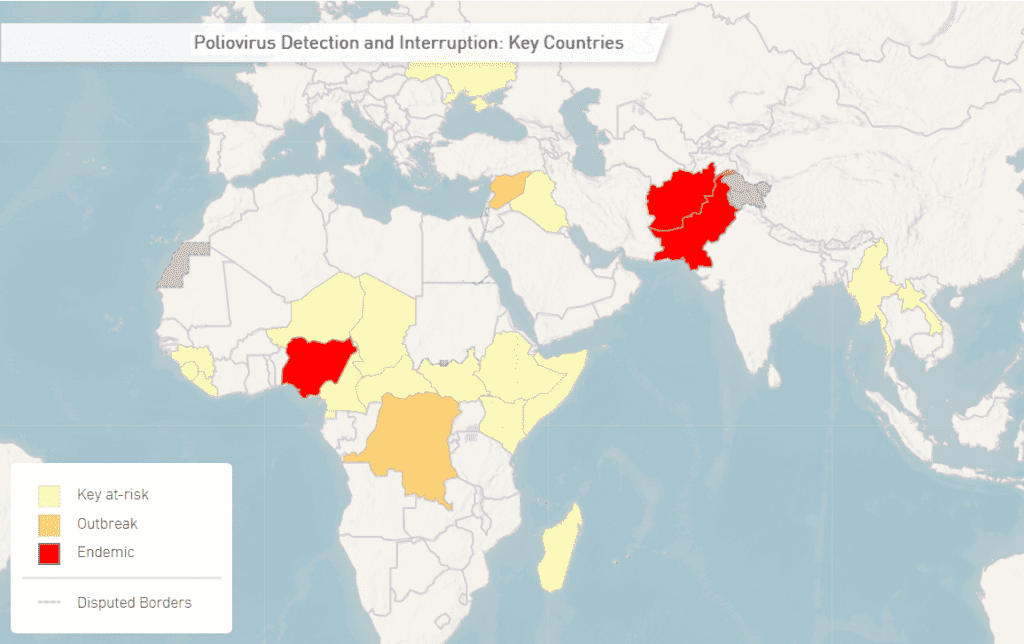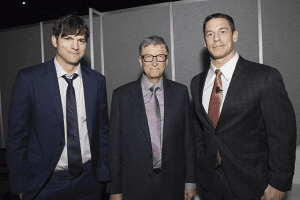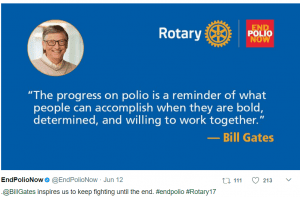24 October
Join us for World Polio Day as global health experts and partners share our progress on the road to polio eradication. Visit the Rotary International Facebook page to watch with other end polio supporters.
The Best Chance to Eradicate Polio is Now
“There’s something about the whole idea of eradicating polio that grabs the imagination,” says Aidan O’Leary. “Most people talk about making steps toward achievements, and it’s almost always into the never-never. Eradication is a zero-sum game; anything short of zero is failure. You keep getting closer and closer, but ultimately the only number that actually matters is zero.”
Although O’Leary, the polio eradication director for the World Health Organization, is speaking from his home in Galway, against the verdant backdrop of western Ireland, his focus is on war-torn Afghanistan and the parched and dusty plains of Pakistan — the last two places on the planet where wild polio still thrives. (Full Article)
Iron Will – (Full Article)
I can’t think of a more important moment than right now in the fight against polio.And that’s a good thing because it shows how much progress the world has made against polio, a terrible and now largely forgotten disease.
This metal tank is an iron lung, a mechanical respirator that saved the lives of thousands of polio victims.
Polio attacks the body’s nervous system, crippling patients. In the worst cases, the disease paralyzes their respiratory muscles and makes it difficult for them to breathe, sometimes resulting in death.
Using changes in air pressure, the iron lung pulls air in and out of a patient’s lungs, allowing them to breathe and stay alive.
During the height of the polio epidemic in the U.S. in the 1940s and 1950s, rows of iron lungs filled hospital wards to treat thousands of polio patients, most of them children… Full Article
 August 2020 – Africa declared free of wild polio in ‘milestone’
August 2020 – Africa declared free of wild polio in ‘milestone’
Africa has been declared free from wild polio by the independent body, the Africa Regional Certification Commission.
Polio usually affects children under five, sometimes leading to irreversible paralysis. Death can occur when breathing muscles are affected.
Twenty-five years ago thousands of children in Africa were paralysed by the virus.
The disease is now only found in Afghanistan and Pakistan.
There is no cure but the polio vaccine protects children for life.
Nigeria is the last African country to be declared free from wild polio, having accounted for more than half of all global cases less than a decade ago. (Full Article)
August 2019
 Rotary announces US$100 million to eradicate polio – Rotary is giving US$100 million in grants to support the global effort to end polio, a vaccine-preventable disease that once paralyzed hundreds of thousands of children each year.
Rotary announces US$100 million to eradicate polio – Rotary is giving US$100 million in grants to support the global effort to end polio, a vaccine-preventable disease that once paralyzed hundreds of thousands of children each year.
The funding comes as Rotary and its partners in the Global Polio Eradication Initiative (GPEI) address the final—and most pressing—challenges to ending poliovirus transmission, and as Nigeria approaches three years without any reported cases of wild poliovirus, bringing the Africa region closer to polio-free status.
“We have the wild poliovirus cornered in the smallest geographic area in history, and now there are just two countries that continue to report cases of the wild virus,” said Michael K. McGovern, chair of Rotary’s International PolioPlus Committee. “As we work with our partners to apply innovative new strategies to reach more children, and embrace lessons learned thus far, Rotary is doubling down on our commitment to end polio for good. I’m optimistic that the end of polio is within our grasp, but we must remain vigilant in rallying global political and financial support as we push towards a polio-free world.” … Full Story
June 2019
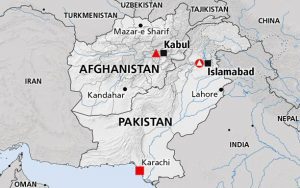 As per the last year or so, the only countries with confirmed cases of Polio are Afghanistan and Pakistan.
As per the last year or so, the only countries with confirmed cases of Polio are Afghanistan and Pakistan.
The Global Polio Eradication Initiative is focusing on reaching every last child in Pakistan with vaccines, strengthening surveillance and maintaining political commitment, financial resources and technical support at all levels. Pakistan has made important progress towards stopping polio in the country. Case numbers are the lowest they have ever been, and the immunity gaps continue to decline. However, in high-risk areas of the country, un-vaccinated children remain vulnerable.
To ensure more children than ever before are reached with the polio vaccine, the campaigns in Afghanistan must be the highest-quality in the program’s history. The focus is on reaching every child with vaccines, particularly those who have been persistently missed. Afghanistan and Pakistan must work together to stop the virus for good, with an emphasis on high-quality immunization activities and surveillance to close remaining immunity gaps and quickly find the virus wherever it is hiding
April 2019
JOINING HANDS ACROSS THE BORDER – All travelers crossing the border between Pakistan and Afghanistan are vaccinated against polio, regardless of age. On both sides of the historical 2640-kilometer-long border between Pakistan and Afghanistan, communities maintain close familial ties with each other. The constant year-round cross border movement makes for easy wild poliovirus transmission in the common epidemiological block.
As a new tactic in their joint efforts to defeat poliovirus circulation, Afghanistan and Pakistan have introduced all-age polio vaccination for travelers crossing the international borders in efforts to increase general population immunity against polio and to help stop the cross-border transmission of poliovirus.
Although polio mainly affects children under the age of five, it can also paralyze older children and adults, especially in settings where most people are not well-immunized. Adults may play a role in poliovirus transmission, so ensuring that they have sufficient immunity is critical to simultaneously eliminating poliovirus from the highest risk areas on both sides of the Pakistan-Afghanistan border.
Feb. 2019
Since 1988, we’ve seen a worldwide reduction in polio cases of 99.9%. For more than two years, we’ve seen wild polio cases in only two countries, Afghanistan and Pakistan – Latest News in Polio Eradication
 Dec 2018
Dec 2018
Rotary PolioPlus Ambassador and polio survivor @jacknicklaus has offered to golf with the next 12 PolioPlus donors of $250,000 or more on March 12th. Twitter! https://www.rotary.org/en/jack-nicklaus-play-golf-rotary-donors
Current Polio Status:
Afghanistan 14 cases | Pakistan 8 cases | Nigeria 0 cases
Oct 2018
World Polio Day – 24 October – One Day, One Focus, Ending Polio.
Did you watch our 6th annual World Polio Day event at the College of Physicians in Philadelphia, Pennsylvania? Watch the livestream program featuring global health experts and celebrities sharing our progress on the road to polio eradication. World Polio Day Livestream
June 2018
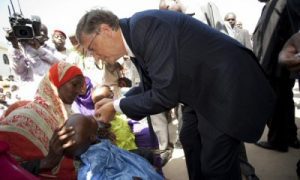 The world’s progress in fighting polio might be one of the best-kept secrets in global health. – Bill Gates, Co-Founder and Co-Chair, Bill & Melinda Gates Foundation
The world’s progress in fighting polio might be one of the best-kept secrets in global health. – Bill Gates, Co-Founder and Co-Chair, Bill & Melinda Gates Foundation
The fight to end polio is led by the Global Polio Eradication Initiative (GPEI), which includes Rotary, UNICEF, the U.S. Centers for Disease Control and Prevention (CDC), the World Health Organization (WHO), the Bill & Melinda Gates Foundation, and governments of the world, with the support of many others around the globe.
Rotary uses its members’ skills and passion to build awareness, fundraise, and encourage governments to donate to and support polio eradication efforts. Over one million Rotary members have volunteered their time and resources to help end polio.
We are now “This Close” to achieving a polio-free world, and many public figures and celebrities have signed on to help Rotary spread the word.
THIS CLOSE VIDEOS
———————————-
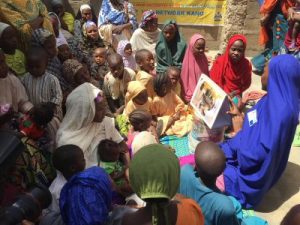 How Imams, Royalty and Family Celebrations are Wiping Out Polio in Nigeria
How Imams, Royalty and Family Celebrations are Wiping Out Polio in Nigeria
Ramlatu Musaa never met the Emir of Kano State in northern Nigeria. Of course, Ramlatu Musaa hasn’t met a lot of people. She’s only about a week old, born in Kano on April 29, 2018, and yet in some ways, the Emir may have helped saved her life.
Two years ago, the polio vaccine was available in Nigeria, but it was still frequently rejected by families. Stray rumors continued to circulate that it was unsafe, able to sicken children and render them infertile. (Full Story)
Dec. 2017 –
Behind the scenes of polio eradication – Rotary’s national advocacy advisers are putting polio on the world stage. Here’s how.
At the Rotary International Convention in Atlanta in June, world leaders were on hand to celebrate a historic $1.2 billion in commitments to finance polio eradication. It was a huge moment for the polio eradication effort. But how did it come about?
A group of Rotary volunteers has been hard at work behind the scenes: our PolioPlus national advocacy advisers. This team of Rotarians from donor countries has a mission to make sure polio eradication is on the global agenda. In the corridors of power, they relentlessly work their connections – lunches with government officials, phone calls with ministers – to garner money and support for ending the disease. (Full Article)
Oct 2017 –
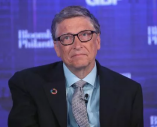 Bill Gates: Polio will be eradicated this year
Bill Gates: Polio will be eradicated this year
Tuesday marks Rotary International’s fifth annual World Polio Day, co-hosted by the Bill and Melinda Gates Foundation, and there is much cause for celebration: It is very possible that 2017 may see the end of the wild poliovirus — nearly two years earlier than Bill Gates predicted.
“What we’re looking at now is sort of the endgame of polio eradication,” says Dr. Jay Wenger, who leads the Gates Foundation’s polio eradication efforts. “We are closer than ever, and we’re optimistic that we can see the end of wild poliovirus disease by as early as this year,” he said.
According to Dr. Wenger, there are only 12 known cases of the wild poliovirus in existence today, in just two countries: Afghanistan and Pakistan. “In the last couple of years, we’ve seen unprecedented progress. In 2015 we could only find 74 cases; in 2016 we found 37, and then this year so far we’ve found only 12 in only two countries.” … (Full article)
Sept 2017 –
Polio remains endemic in three countries – Afghanistan, Nigeria and Pakistan. Until poliovirus transmission is interrupted in these countries, all countries remain at risk of importation of polio, especially vulnerable countries with weak public health and immunization services and travel or trade links to endemic countries.
Today, the three countries have never stopped transmission of endemic wild poliovirus. The countries are working to deliver vaccination services to their people, to carry out sensitive disease surveillance and to cooperate to immunize migrating populations across their common border. Global Polio Eradication Initiative (GPEI) also supports countries that experience or are vulnerable to the rise of vaccine-derived polio viruses (VDPVs), which are rare and only occur when polio vaccination rates are low. When VDPV cases occur, high levels of vaccination, robust surveillance, and rapid outbreak response are critical.
GPEI is also working to strengthen surveillance and immunization systems in the African and Eastern Mediterranean regions of the World Health Organization to ensure that polio has truly ended and immunity against the virus improves. In many countries of the world, surveillance against polio is maintained through the GPEI, and vaccination activities continue, to make sure children remain protected as long as there is polio anywhere.
August 2017 –
The United Kingdom has announced 100 million in new funding to polio eradication to meet the final challenges. Polio remains endemic in three countries – Afghanistan, Nigeria and Pakistan. Until poliovirus transmission is interrupted in these countries, all countries remain at risk of importation of polio, especially vulnerable countries with weak public health and immunization services and travel or trade links to endemic countries. http://polioeradication.org/
2017 Bill and Melinda Gates – Annual Letter – Read the letter
June 2017 –
“$1.2 Billion Pledged to #EndPolio at #Rotary17 Convention” Thanks @gatesfoundation @EU_Commission @CanadaDev+++ https://twitter.com/i/moments/874269056563630080 … With polio on the brink of eradication, nations from around the world and key donors pledged more than $1 billion on Monday to energize the global fight to end the paralyzing disease. Bill Gates, introduced by John Cena, addressed the convention.
April 2017 – Rotary’s Polio Efforts Praised by Bill and Melinda Gates
Every year, Bill and Melinda Gates publish an annual letter to broaden awareness and interest in key global health and development programs. This year’s Annual Letter mentioned polio among their foundation’s ongoing efforts to fight disease and inequality, specifically, the incredible progress that’s been made towards polio eradication. Melinda Gates offers these kind words to reaffirm the important role Rotary has had leading the way to a polio-free world:
‘The Magic Number (Letter from Melinda Gates)‘
“We’re awed by the teams of vaccinators who take risks to reach each child. And we’re inspired by the infinite persistence of Rotary International. They were leading this fight long before we joined it, and they’ve just kept moving forward.”
She goes on to say, “They know going from 350,000 cases to 37 is amazing, but success is zero.” Even though a handful of polio cases have been reported this year, there is a chance these are the last cases of polio in history. This June, Bill Gates will speak at the Rotary International Convention in Atlanta, Georgia, USA to discuss how we can — and will — end polio together.
March 2017

6 Key Numbers in the Fight to End Polio
We are close to eradicating a human disease for only the second time in history. A global publicprivate partnership has reduced the poliovirus caseload by 99.9% over the last 30 years, but there’s still plenty of work to do.
Even before we reach that milestone, the knowledge and infrastructure built to fight polio is being repurposed to take on other global challenges.
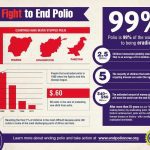
3 countries where polio is still endemic
Fewer than 40 children were paralyzed by polio in 2016, the lowest number in history. This is a dramatic decrease from the estimated 350,000 cases per year in 125 countries that the world saw in 1985 – the year that Rotary International initiated a worldwide effort to eradicate this terrible disease.
In 1988, Rotary was joined in the effort by WHO, the U.S. Centers for Disease Control, UNICEF (and more recently the Gates Foundation) to create the Global Polio Eradication Initiative (GPEI).
Today the virus is limited to a few areas in just three countries – Pakistan, Afghanistan and Nigeria. In response, Nigeria intensified surveillance activities to pinpoint where the virus is circulating. In Pakistan, innovative tactics are being used to focus polio immunization drives. Health workers are trained in the use of cellphone data reporting, which allows real-time recording of immunization coverage and public health surveys of populations.
In Afghanistan, the program continues to adapt in order to reach the maximum number of children possible despite a volatile security situation.
155: the number of countries involved in largest coordinated vaccine switch in history
There are three different strains of the poliovirus. Once a strain is eliminated (type 2 was officially eradicated in September 2015), we have to match our vaccines to the remaining strains to protect children globally. This transition is a massive undertaking, requiring significant funding and coordination to accomplish global health feats that have never been attempted. To give you a sense of scale, the largest and fastest globally coordinated vaccine switch in history (to target poliovirus types 1 and 3) was successfully conducted over two weeks in April 2016, with 155 countries taking part.
$60 billion: the cost of infectious disease epidemics per year
The spread of infectious diseases is consistently among the world’s top 10 risks in terms of impact. The eradication of polio will mean no child will ever be paralyzed by this debilitating disease again. However, we must use the knowledge and infrastructure built up over many years by the GPEI to take on other global health threats. Dramatic progress on improving children’s health beyond polio is already underway – resulting in a decreasing number of children dying from other preventable diseases in countries with strong polio infrastructure. Polio drops are now often delivered alongside essential services including nutrition support, primary health care and other vaccines.



